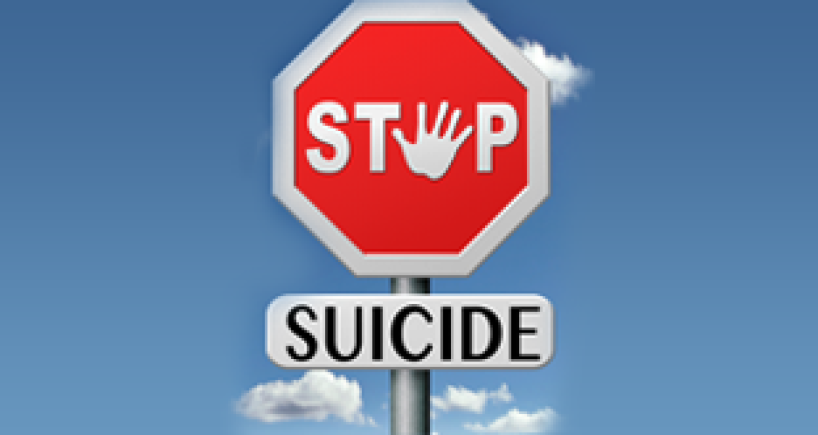
Mental Health and Behavioural Sciences
Don'T Give Up
Don'T Give Up Sep 09, 2014
 Stories about suicide get frequently cited in the papers and for those who have been closely associated with someone who has attempted to harm themselves it can be a mystery as to what could have pushed the person this far and could something have been done to prevent it? Were there some signs which were there which got missed out or were ignored? Or was it simply something that had to happen and so it did?
These and many other? questions associated with the what, why and how of suicide can continuously plague our minds. They leave us in a state of quandary, forcing us to grapple with difficult emotions and thoughts, a lot of which may not make sense despite numerous attempts to assemble them into a coherent whole.
Why suicide?
Ask any person who has attempted self-harm, why did you do this or why did you not think of others around you and the pain and suffering caused to them? The answer would in all likelihood be that maybe those around don’t care or that it did not seem things would resolve and become ok or that life just does not seem worthwhile or that I feel like I am a burden. These and many other similar answers would come your way.
You need to know that the number of suicides and attempted suicides have increased significantly. In the young population, the rates of suicide have quadrupled. In adults too, suicides are on the rise. Yet suicide is a preventable. It is preventable because there are signs which can indicate that a person is contemplating something. It is preventable because for 90% of those who attempt suicide, there is a diagnosable mental health related problem which remained undiagnosed and untreated.
What are the warning signs?
People who contemplate harming themselves would typically be those who have had a history of challenges or difficulties which may be difficult for them to cope with. Typically it is not a single proximal incident that converges to cause an individual to harm themselves. It is a combination of what experiences have been like in the past along with the current situations which predispose one to do something like this. Such a person would have a largely negative outlook towards things and would find it difficult to see the positive.
Things would typically assume catastrophic levels for them and they would feel helpless and hopeless that anything can get better. At the same time they would perceive themselves to be a burden and a strain, frequently generating within their own selves a feeling of not being cared for or loved.
A large majority of those who contemplate suicide would also plan for it and that is something one should be vigilant about. At the same time, they would reach out in some subtle form or the other, mentioning their thoughts and feelings to someone associated with them.
What should you do?
As a person associated with an individual who may be talking about self-harm or someone who has attempted self-harm, you should encourage help seeking. Besides being available and providing support, ensuring that you do not leave the person alone, it is important to also push the person to seek professional help. If you can ensure that the right kind of medical and therapeutic help is reaching this person, suicide can surely be prevented.
At the same time, it is important to adopt a non-critical attitude, which would mean not blaming the individual or being out rightly negative towards them for whatever is happening. Also, it would be essential to be supportive and reassuring, while providing them assurance that things can be worked upon and made better.
Stories about suicide get frequently cited in the papers and for those who have been closely associated with someone who has attempted to harm themselves it can be a mystery as to what could have pushed the person this far and could something have been done to prevent it? Were there some signs which were there which got missed out or were ignored? Or was it simply something that had to happen and so it did?
These and many other? questions associated with the what, why and how of suicide can continuously plague our minds. They leave us in a state of quandary, forcing us to grapple with difficult emotions and thoughts, a lot of which may not make sense despite numerous attempts to assemble them into a coherent whole.
Why suicide?
Ask any person who has attempted self-harm, why did you do this or why did you not think of others around you and the pain and suffering caused to them? The answer would in all likelihood be that maybe those around don’t care or that it did not seem things would resolve and become ok or that life just does not seem worthwhile or that I feel like I am a burden. These and many other similar answers would come your way.
You need to know that the number of suicides and attempted suicides have increased significantly. In the young population, the rates of suicide have quadrupled. In adults too, suicides are on the rise. Yet suicide is a preventable. It is preventable because there are signs which can indicate that a person is contemplating something. It is preventable because for 90% of those who attempt suicide, there is a diagnosable mental health related problem which remained undiagnosed and untreated.
What are the warning signs?
People who contemplate harming themselves would typically be those who have had a history of challenges or difficulties which may be difficult for them to cope with. Typically it is not a single proximal incident that converges to cause an individual to harm themselves. It is a combination of what experiences have been like in the past along with the current situations which predispose one to do something like this. Such a person would have a largely negative outlook towards things and would find it difficult to see the positive.
Things would typically assume catastrophic levels for them and they would feel helpless and hopeless that anything can get better. At the same time they would perceive themselves to be a burden and a strain, frequently generating within their own selves a feeling of not being cared for or loved.
A large majority of those who contemplate suicide would also plan for it and that is something one should be vigilant about. At the same time, they would reach out in some subtle form or the other, mentioning their thoughts and feelings to someone associated with them.
What should you do?
As a person associated with an individual who may be talking about self-harm or someone who has attempted self-harm, you should encourage help seeking. Besides being available and providing support, ensuring that you do not leave the person alone, it is important to also push the person to seek professional help. If you can ensure that the right kind of medical and therapeutic help is reaching this person, suicide can surely be prevented.
At the same time, it is important to adopt a non-critical attitude, which would mean not blaming the individual or being out rightly negative towards them for whatever is happening. Also, it would be essential to be supportive and reassuring, while providing them assurance that things can be worked upon and made better. 


















